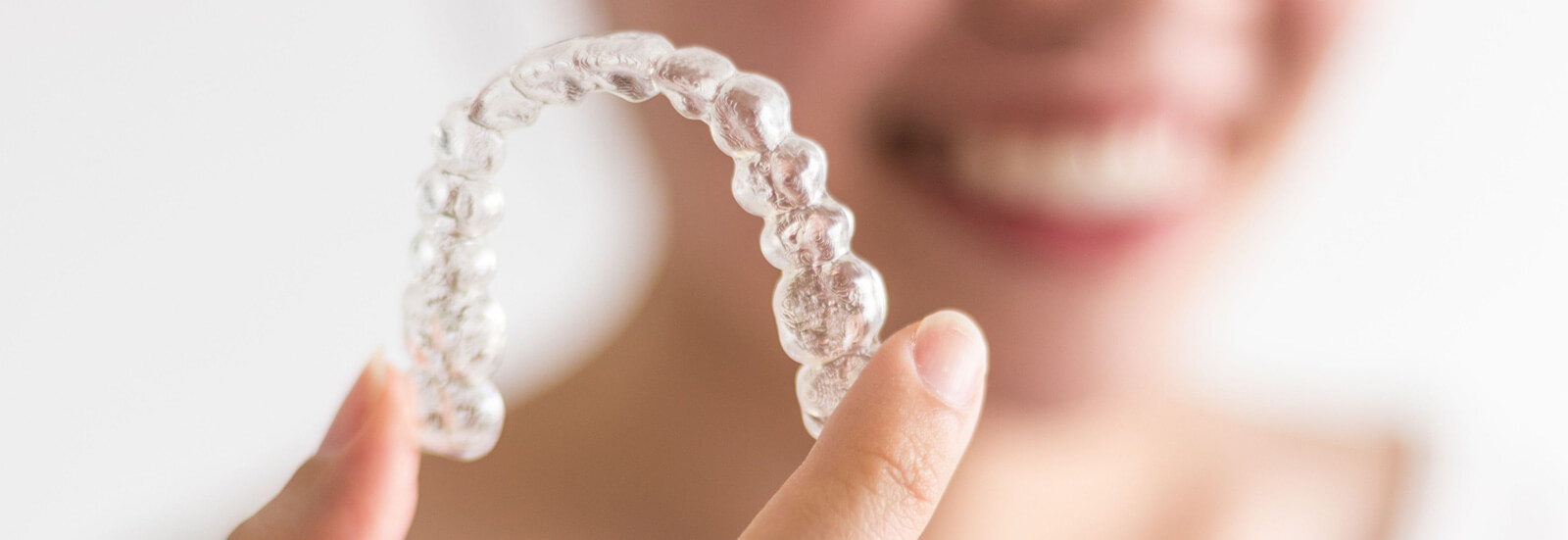New patients often have many questions about getting braces and what it will be like. Each patient brings their own dreams of a straighter smile as well as their own concerns about how orthodontic treatment might impact their lives. For most patients, however, the actual course of orthodontic treatment is just a blip on the radar when compared with all the years they will be enjoying and showing off their straight new smile. In this article, learn more about what treatment will be like, including how to care for your teeth during treatment through brushing.
Different Types of Braces
Orthodontic medicine today has come a long, long way from its roots! Today, there are nearly as many ways to achieve a straight, beautiful smile as there are patients who desire this outcome. The most common types of orthodontic treatment include these:
Invisalign
This tooth-straightening system uses a series of aligners (similar to retainers) to systematically straighten and re-align teeth. Invisalign can be an easier system to manage in terms of brushing and flossing your teeth. The aligners can be removed while you perform these routine hygienic tasks.
Damon System
This type of treatment uses a series of metal wires equipped with sliding brackets. This system makes the use of elastic bands unnecessary.
Herbst Appliance
This specialty treatment is designed for patients whose lower jaw needs more time and support to develop properly while the upper teeth are being straightened and aligned.
Clear, stainless steel or gold materials
These three options give kids and adults more flexibility in selecting a tooth-straightening system that matches their lifestyle and color preferences.
Inspire
These braces, made of a beautiful clear sapphire material. They are incredibly strong and durable yet much less noticeable than their steel or gold counterparts This makes them ideal for image-aware kids and teens.
Your orthodontist can consult with you to determine the best treatment methods for your tooth straightening needs and help you select your preferred method.
Caring for Your Teeth During Orthodontic Treatment
Brushing and flossing are always important for the general care of the teeth, gums and mouth tissues. But when you are receiving orthodontic treatment, these routine hygiene tasks become twice as important. During treatment, your orthodontist will be steadily monitoring and adjusting your teeth to ensure your final result is a gorgeous, straight smile. The materials used to achieve this result may feel like they get in the way of routine brushing and flossing. Part of your treatment will include instruction on how to overcome this obstacle.
Special Orthodontia Helps to Aid in Brushing and Flossing
Luckily, the field of orthodontia has also developed a number of specialized hygiene helps that work very well for patients receiving treatment. For instance, you may be instructed to use a water-based pre-flossing system to get rid of larger particles of food before you move on to brushing. Your treatment care package will likely include special types of floss that are designed to get into the tiniest cracks and crevices to remove food and prevent tartar buildup. You may also be instructed to use an antibacterial sanitizing mouthwash after brushing and flossing. This is to ensure your tissues and gums do not become a hiding place for bacteria.
Brushing and Flossing Frequency
Ultimately, your teeth and gums will benefit most when you brush and floss after each meal or snack. But sometimes this can be very hard to accomplish. Especially when patients are at school or work or have other time-sensitive daily plans. So here, the goal should be to brush and floss at a minimum of each morning after breakfast and each evening after dinner. For spot maintenance throughout the day, you can carry a travel-sized toothbrush and some toothpaste and a little pack of special orthodontic floss with you. You may also want to keep some sanitizing mouthwash with you when you have very little time after a meal on-the-go.
Brushing When Teeth or Gums are Sore
If there is one thing orthodontic specialists understand, it is that having treatment can take a little getting used to. At first (for at least a week or few) your teeth or gums may feel a bit sore as the realignment and straightening process begins. But it is very important to continue brushing and flossing regularly and thoroughly during this initial period of tenderness. Your teeth and your smile (as well as your orthodontia treatment team) will thank you for your diligence.
https://www.youtube.com/watch?v=kbuJveS7Bgk
The Consequences of Poor Tooth Care During Treatment
Because orthodontic treatment does present certain unique challenges to regular brushing and flossing, occasionally a patient will shirk these tasks. While understandable, it is important for even very young patients to understand that poor tooth care during treatment has its own unpleasant consequences. One of the most common consequences is irritated swollen gums. This happens when bacteria and plaque are allowed to build up and form tartar. Another common consequence is tooth decay, which then requires additional treatment to clear out the decay and fill the cavity. These consequences point out why making a little extra tooth care effort now always pays off when treatment ends!
Contact Nease & Higginbotham Orthodontics
Here at Nease & Higginbotham Orthodontics, we get excited every time we see a patient enjoying their new straight smile for the very first time. It is why we do what we do! Together, Drs. Higginbotham & Nease have nearly 60 years of expertise in the field of orthodontia. Each brings their own unique area of expertise and passion to the practice of orthodontics. And both are staunch advocates and supporters of the nonprofit American Association of Orthodontists Foundation (AAOF). Nease & Higginbotham Orthodontics treats patients of all ages using a variety of the latest cutting edge orthodontic methods. To learn more and schedule your initial consultation, contact us at 864-579-7700.
Nease and Higginbotham Orthodontics
Tel: (864)579-7700
2455 E. Main Street
Spartanburg, SC 29307



